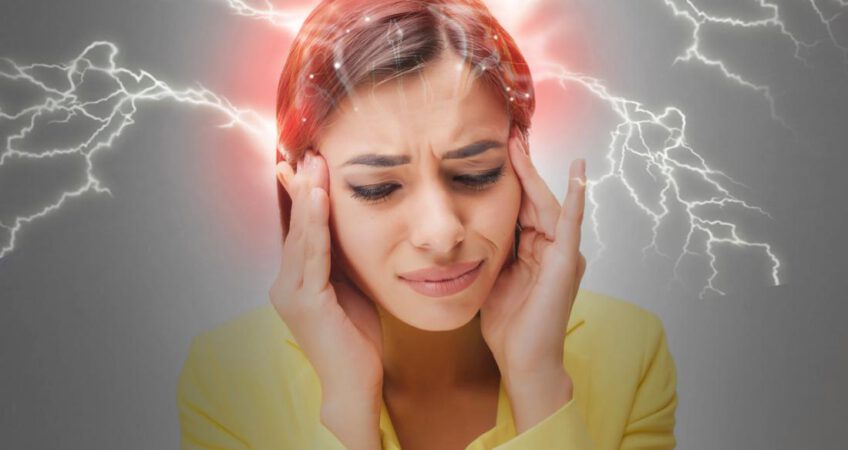Migraine headache is a throbbing, moderate to severe pain usually on one side of the head where symptoms typically last 4 to 72 hrs. The pain generally get worsen by physical activities.
Migraine affect slightly more in boys than girls before puberty & 2 to 3 times more in women than men. Globally approximately 15% of people are affected by Migraine.
CAUSES
The cause is unknown.But believed to be related to a mix of environmental & genetic factors. They run in families in about two third of cases.
SIGNS & SYMPTOMS
- Throbbing type of pain is typically felt on one side of the head.
- Physical activity, light, sounds or smells may make the headache worse.
- Headache often accompanied by nausea, sometimes with vomiting.
- Loss of appetite may also occur.
- Rarely people experience tingling sensations, loss of balance, weakness in arms or legs, difficulty in talking. An aura occurs within an hour before the migraine & ends as the migraine begins.
- About 20% of people experience a postdrome which involves changes in mood & behaviour after the migraine.
- Migraine attacks may occur frequently for a long period of time but then may disappear for many weeks, months or even years.
- Migraine attacks often involves more than a headache. It may include prodrome, an aura & a postdrome.
There are 4 possible phases to a migraine although not all the phases are necessarily experienced.
- Predromephase – which occurs hours or days before the headache.
- Aura phase – which immediately precedes the headache.
- Pain phase – Also known as headache phase.
- Postdrome phase – The effects experienced following the end of migraine attack.
PRODROME PHASE
This phase is also known as premonitory symptoms occurs in about 60% of those with migraine with an onset that range from 2hrs to 2 days before the start of pain. The symptoms may include a wide varity of phenomena including altered mood, depression, irritability, fatigue, carving for certain food, stiffness over the neck, constipation or diarrhoea, sensitivity to noise or smell
AURA PHASE
It is a transient focal neurological phenomenon that occurs before or during the headache, typically a short period of visual disturbance which signals that the headache will occur soon. Often a pricking type of pain is felt in the hand, arm & spreads to face area on the same side
PAIN PHASE
The headache is unilateral, throbbing & moderate to severe in intensity. The pain starts gradually & aggravated by any physical activities & usually last 4 to 72 hrs. Most of the time pain is accompanied by nausea, vomiting, fatigue, sensitivity to sound, smell, light etc.
POSTDROME PHASES
In this phase symptoms occurs once the acute headache settle down. The person may feel tired, heaviness over the head, vision difficulities, gastric disturbance, mood changes & weakness.
TRIGGERING FACTORS
- Emotional stress
- Sensitivity to certain foods & chemicals
- Alcohol
- Hunger
- Fatigue
- Change in weather conditions
ARTHAVABHEDAKA
According to Ayurveda Migraine is correlated to Arthavabhedaka (one sided headache) where Vatadosha aggravates because of improper lifestyle & diet and when it is associated with the Kaphadosha& settle in head region which cause severe pricking type of pain in the half part of the head, facial region, ear, eyes.
Ardhavabhedaka is caused due to improper diet & improper lifestyle, environmental changes also play a major role.Aaryas have clearly mentioned, first one have to discontinue the cause which is responsible for the Arthavabhedaka (nidanaparivarjana). Along with external treatments & medications certain diet also have to be followed.
Dr Sreelakshmi Vijay,
B. A. M. S
Travancore Ayurveda
Centre Head – Jubilee Hills



